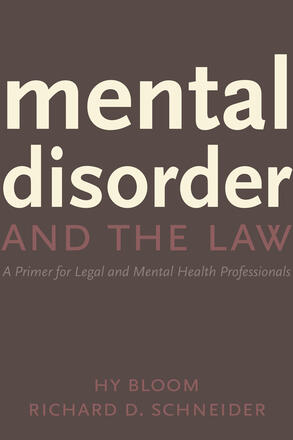
Mental Disorder and the Law
A Primer for Legal and Mental Health Professionals
La description
Over the past decade or so, Canada’s criminal justice system has had to deal with escalating numbers of mentally disordered offenders.
At the provincial level, a number of provinces have implemented “diversion” programs. These programs are vehicles for re-connecting mentally disordered individuals with the civil mental health care systems from which they have become disconnected. In 1992, the Parliament of Canada introduced sweeping changes to the Criminal Code which reflected a new approach to the problem of the mentally ill offender. These changes were based on a growing appreciation that treating mentally ill offenders like other offenders failed to address properly the interests of either the offenders or the public. The emphasis in the legislation and in the judicial decisions which have followed it is on achieving the twin goals of protecting the public and treating the mentally ill offender fairly and appropriately.
This purpose of this book is to inform, promote understanding, and demystify. The book follows the logical and temporal sequence of the issues a mentally disordered accused is likely to encounter from arrest to sentencing—or in the case of an accused found not criminally responsible, until that point when he or she is absolutely discharged by a provincial or territorial review board. It provides a succinct overview of the key topics that judges, crown and defence counsel, and mental health providers are likely to encounter in their day-to-day work with mentally disordered offenders. It brings together psychiatric/clinical information with key legal principles, case law, and applicable statutory provisions; it thereby allows the reader to access relevant theoretical and practical information from the disciplines of both psychiatry and law. Collaboration between the two disciplines will undoubtedly play a pivotal role in facilitating the provision of service to this afflicted and invariably underserviced population.
An earlier version of this work entitled The Mentally Disordered Offender was written specifically for the National Judicial Institute’s “Electronic Bench Book” series.